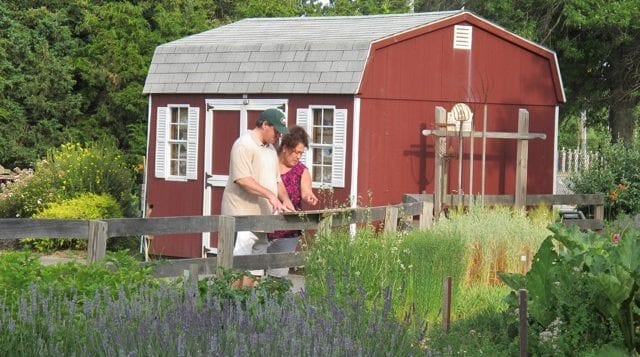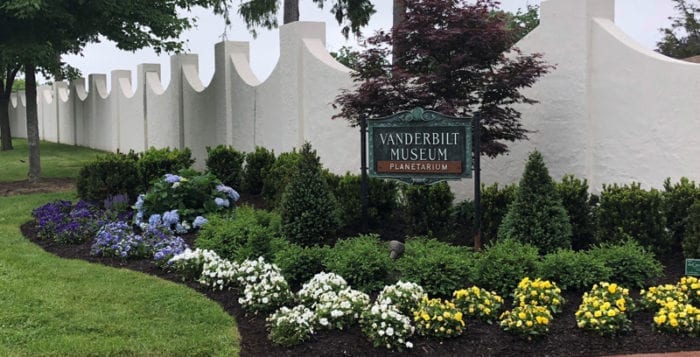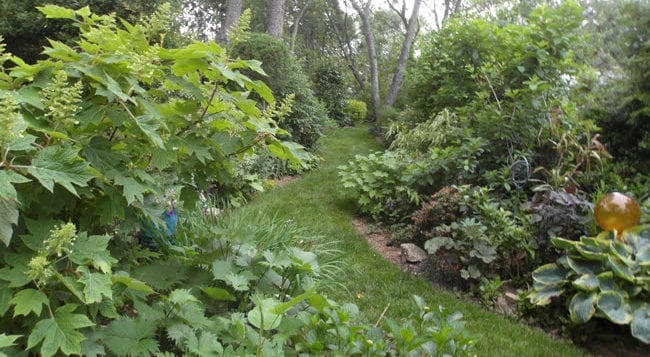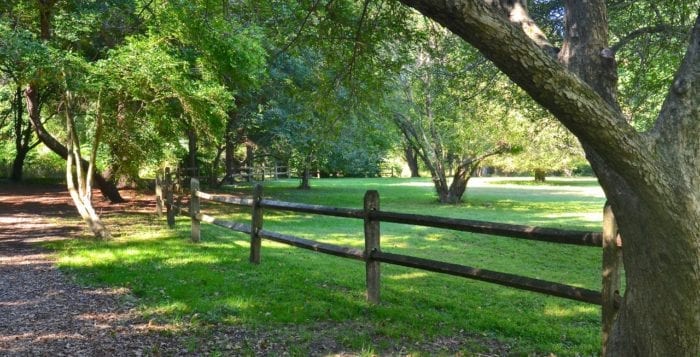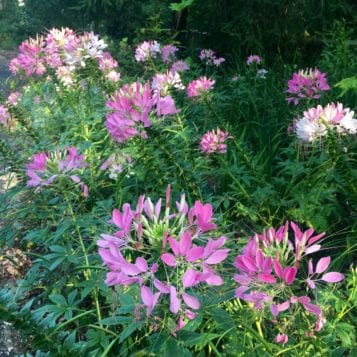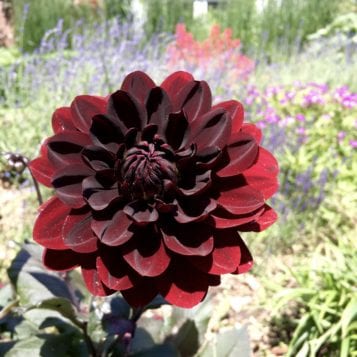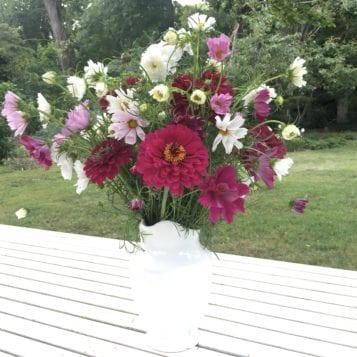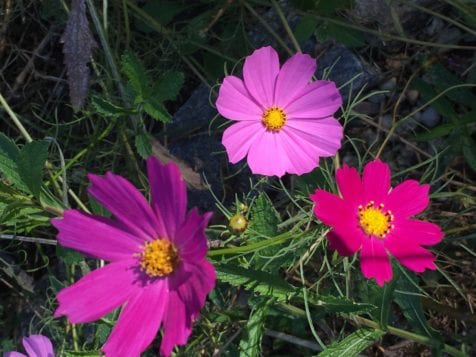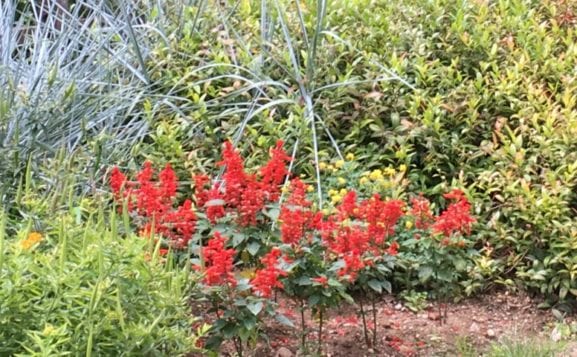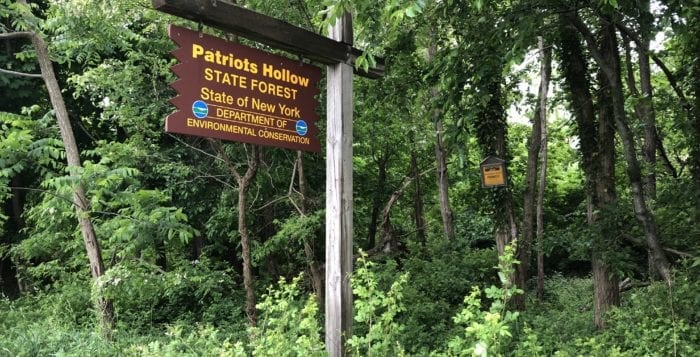Interested in growing your own vegetables but have limited space at home? The Mount Sinai Garden Club has a number of community garden plots available at Heritage Park, 633 Mount Sinai-Coram Road in Mount Sinai this year. Each 4-foot by 8-foot plot, located behind the Heritage Center, is available for $25. Water is available. For more info, call Walter at 631-331-0689.
Vanderbilt Museum seeks designers, landscapers for second annual Gardeners Showcase
CENTERPORT: The Suffolk County Vanderbilt Museum will host its second annual Gardeners Showcase, The Gardens of Eagle’s Nest, during spring and summer 2019. The museum invites local nurseries and garden designers to show off their skills and creativity in one of the gardens that grace the 43-acre waterfront estate, which is listed on the National Register of Historic Places.
 Spots are still open for several showcases and will be available on a first-come, first-served basis. In return for their effort and contribution, participants will receive signage that identifies their business at each garden showcase site; recognition on the Vanderbilt website and publicity on its social-media platforms; publicity through news releases sent to regional media; and a one-year Associate Membership to the Vanderbilt Museum.
Spots are still open for several showcases and will be available on a first-come, first-served basis. In return for their effort and contribution, participants will receive signage that identifies their business at each garden showcase site; recognition on the Vanderbilt website and publicity on its social-media platforms; publicity through news releases sent to regional media; and a one-year Associate Membership to the Vanderbilt Museum.
To secure a spot in this year’s Gardeners Showcase, or to obtain more information, please contact Jim Munson, the Vanderbilt Museum’s operations supervisor, at 631-379-2237 or at [email protected].
Photos from Vanderbilt Museum
Suffolk County grant to aid last Centereach farm
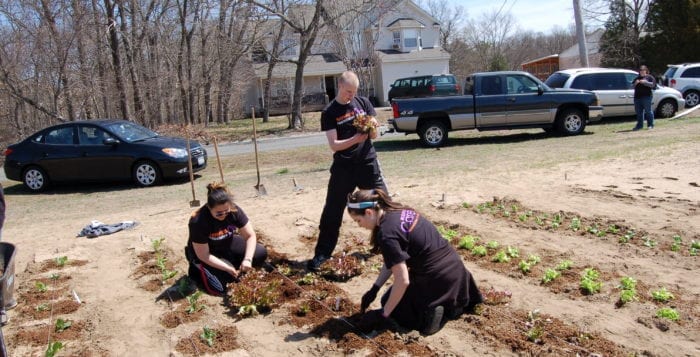
More educational programs are coming to the last farm in Centereach thanks to a county grant.
Suffolk County Legislator Tom Muratore (R-Ronkonkoma) sponsored a resolution to amend the 2018 operating budget and transfer funds to Sachem Teen Center, Suffolk County Police Athletic League and Bethel Hobbs Community Farm. The transfer resulted in a $29,616 grant for the farm, which donates 90 percent of its vegetables to area food pantries.
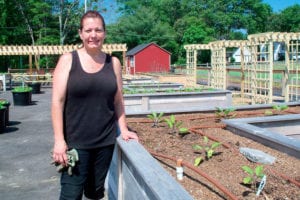
Vice President Ann Pellegrino said Muratore has been one of the farm’s biggest supporters for years, and to thank him, he will receive a plaque at Bethel Hobbs Community Farm’s annual Fall Harvest Festival Oct. 6.
“He sees the good work that we’re doing over here, and he always likes to help us out,” she said. “And this year, he really pushed for a grant.”
Muratore said he loves the farm. A few years ago, he joined Town of Brookhaven Councilman Kevin LaValle (R-Selden) in organizing Run the Farm, an annual four-mile race fundraiser.
“I think it’s a wonderful, wonderful asset that we have in the district and in the county,” the legislator said. “Ann Pellegrino does so much with that place and with the children, and people get to buy fruits and vegetables there that are homegrown. It’s really a big plus for the community.”
Muratore said his fellow county legislators voted unanimously for the grant.
He said it’s up to Pellegrino what she does with the funds. The farm’s vice president said she plans to use the money to enhance the educational programs it offers for students with things like farm tours and making salads with them. In the future, she said she would love to build an indoor classroom so when it’s cold or raining outside, programs can be held indoors. She said it’s the first time they received a significant amount of money. “We’ve never had that, never,” Pellegrino said. “We’re always scrounging for pennies. There is so much we can do with that.”
Pellegrino invites the community to the farm’s 10th annual Fall Harvest Festival which will be held this Saturday, Oct. 6, from 11 a.m. to 5 p.m. The afternoon will feature tractor rides, live music, face painting, pumpkins, a bounce house, games and contests, food, a visit from the “Science Guy,” a farm stand and much more. Admission to the festival is free with fees for certain activities.
Bethel Hobbs Community Farm is located at 178 Oxhead Road, Centereach. For more information, visit www.hobbsfarm.info.
Smithtown Historical Society seeks volunteers
Calling all green thumbs! The Grow to Give Garden is in full swing at the Smithtown Historical Society, but they need more help! Thanks to some funds from a grant, they have a bunch more seedlings to get in the ground, and plenty of other work to keep everyone busy as well. Come down Monday night, July 9th, starting at 5:30 p.m. to lend a hand. Any time you can give is appreciated, and no experience is necessary. They will supply all the needed tools. Enter through entrance at 239 Middle Country Rd – the garden is directly behind the Cottage house. Call the office with any questions. 631-265-6768.
Garden Conservancy holds Open Day event
The Garden Conservancy will host a New York Open Day at 42 Jesse Way in Mount Sinai on Saturday, June 30 from 10 a.m. to 4 p.m. Tour the Becker garden, described as an explosion of color, fragrance, sound and texture.
Aptly named the Tranquility Garden, it features hundreds of perennials, shrubs, trees and annuals combined with water features, lawn art and recently relocated garden trails that allow the visitor to enter the owner’s vision of an Impressionistic garden painting. Footpaths wind through the extensive garden, allowing visitors to immerse themselves in the sights and sounds of nature and escape the general stress of modern lifestyles.
Admission is $7 per person, cash or check only, and the event will be held rain or shine. For more information, please call the Garden Conservancy at 845-424-6500.
Your Turn: A hidden haven – the Three Village Garden Club Arboretum
By Karen Smith
There are days when we need a break from the general craziness of life, and we just want to get outdoors to walk in a peaceful place. Three Village residents are fortunate to have a number of options for this peaceful pursuit and one of the very loveliest is the Three Village Garden Club Arboretum, accessible through the parking lot of the adjacent and separately owned Frank Melville Memorial Park, 101 Main St., Setauket.
This “hidden haven” contains 4.5 acres of wooded pathways that meander through an open meadow, past 30 varieties of specimen trees and shrubs, and offers views of the Conscience Bay headwaters. It’s a habitat for birds, butterflies, frogs, turtles and the rabbits, squirrels and deer that are found throughout our area.
In early spring you can view the trees and shrubs starting to bud, and as the months pass there are flowers in bloom, then the fall colors and finally the stark beauty of winter. Each offers a different experience, but the feeling of tranquility always is there.
While the arboretum is open to the public, it is privately owned and maintained by the Three Village Garden Club, a 501(c)(3) nonprofit corporation. Our volunteer and hardworking arboretum administrators oversee the planting of new trees, shrubs and plants, regular mowing of the meadow, removal of invasive plants and management of bamboo. In addition, arborists are called in as needed to remove tree limbs, and when necessary, entire trees. When required, wood chips are added to pathways to ensure that trails remain dry.
The thousands of dollars expended annually on this maintenance by the TVGC is deemed necessary to ensure the safety of all visitors and the beauty of the property.
In addition, many hours of volunteer work are provided by members of Students Taking Action for Tomorrow’s Environment (S.T.A.T.E.), part of the Avalon organization, and at times, Scouts and of course, garden club member-volunteers.
The arboretum also is used for educational purposes, chief among which are the Arbor Day celebration held in spring and the Meet the Trees program in the fall.
Second-grade students from all elementary schools in the Three Village School district are invited to visit and have these “hands-on” experiences to supplement their science curriculum. For the past 10 years it also has been the site of a Teddy Bear Picnic for preschoolers and their parents, offering a walk through the property to introduce them to the natural environment.
You’re cordially invited to visit! Come with a friend or family member. Leashed pets are permitted. Enjoy this beautiful haven whenever you’re in the mood for a peaceful place!
Karen Smith is a member of the Three Village Garden Club.
The Gardener’s Delight: Dependably deer-proof annuals provide weeks of vibrant colors
By Kyrnan Harvey
Successful perennial plantings present landscaping solutions that endure for a few years at a minimum: right plant, right place. Yarrows, peonies, echinaceas, catmint, sages and grasses of all kinds are dependable year-in, year-out, with no worries that the deer will compromise the peak of their performance with unpredictable browsing.
But what about annuals? What possibilities are there for long seasons of color that deliver a strong return on our efforts, and that the deer will dependably leave alone? Here’s a few that my wife and I have successfully grown in our East Setauket garden, which happens to be Grand Central Station for deer. These plants supply many weeks of color and character and carry the garden from July through October, and they too can be counted on as year-in, year-out solutions. These here all require plenty of sun, so if you haven’t got enough, maybe it’s time to call an arborist and remove some Norway maples, Ailanthus (tree of heaven) or black locust.
Snapdragons flower in early summer. They are charming in a vase and there are some great colors out there. They self-seed for us and occasionally overwinter. We like the taller ones; the deer don’t.
Nor do they touch cosmos or zinnias. The former are charming daisies, the embodiment of simplicity in the garden; the latter have the colors that remind me of vintage psychedelic rock posters. Buy them at the garden center or start seeds in April. We prefer the tall zinnia seed strain, Giant. Dead-head spent flowers, especially the zinnias.
We love lantana. Readily available, we have certain varieties in certain colors that we look out for. The Bandana series is upright and not trailing. They are actually perennial, woody shrubs, native in the tropics and thus not hardy. Vibrantly colored, heat and drought tolerant, aromatic, they attract hummingbirds and butterflies.
We started years ago supplementing clients’ sunny beds with them, and we’d cut them back to about a foot in early November; dig them up and squeeze them into as small an azalea pot (broader than deep) as possible; water them in just once; leave them a day or two outside; and leave them alone to be dormant in a cold (but not freezing) garage or basement. We try to place them where there is a window, just a tiny bit of light, let them get good and dry, and water only every three or four weeks. We move them outside in May, they start growing, and by late May they are planted out again. They get larger from year to year, but we still pot them up, not without questioning our sanity, and are rewarded with lantanas a yard high and wide — a splendid filler after spring and early summer perennials are finished.
One might expect zaftig dahlias to be irresistible to deer, but astonishingly they are unmolested. My wife has become the in-house dahlia enthusiast at Bosky Garden Design, adding each year to her collection of favorites. And there are indeed so many gorgeous varieties. The best cut flowers, you can grow them just for that, or they are easily incorporated in mixed planting schemes, color combination possibilities are endless. We overwinter them, again in a cold basement, bare of soil, wrapped first in newspaper and placed in those 5-cent plastic bags with peat moss.
We love the shock of red of scarlet sage, if used wisely (i.e., segregated), but salvias of all kinds are avoided by deer. Salvia greggii is sold as an annual, but some varieties will be perennial given favorable conditions. This is a plant to look for; there is a wide range of colors, some hardier than others.
Cleome will self-seed prolifically, not until late May. Sparkler is a great seed strain that is tall and that repels deer for sure.
Last, and certainly not least, we have Verbena bonariensis, a short-lived perennial, technically, that succumbs to temperatures below 10 degrees but that self-seeds more abundantly than even cleome. For us it is a tall matrix plant that intermingles everywhere in the garden. Loved by butterflies, loathed by deer, it epitomizes and unifies the naturalistic planting style.
Kyrnan Harvey is a horticulturist and garden designer residing in East Setauket. For more information, visit www.boskygarden.com.
All photos by Kyrnan Harvey
Vanderbilt estate in Centerport receives garden makeover
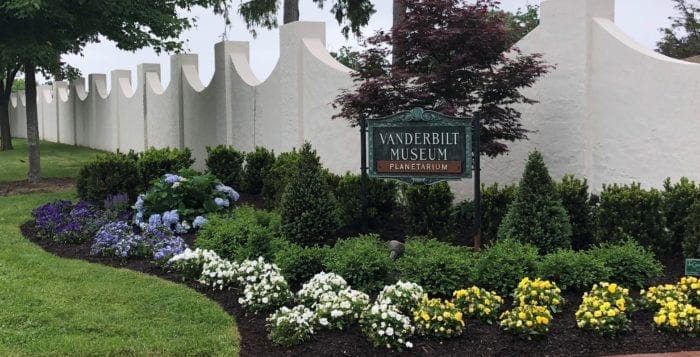
Throughout the summer, visitors to the Suffolk County Vanderbilt Museum in Centerport will see the spectacular results of its first Gardeners Showcase.
A call went out at the beginning of the year inviting local nurseries and garden designers to “bring back the gardens.” In May, local nurseries, landscapers and garden designers used their artistry to transform 10 gardens on the grounds of the 43-acre waterfront estate of William K. Vanderbilt, which is listed on the National Register of Historic Places and is one of the last remaining Gold Coast estates on the North Shore of Long Island.
“I am grateful for the enthusiastic response from the landscaping and gardening community to volunteer their talents to beautify this historic estate,” said Lance Reinheimer, executive director of the Vanderbilt Museum.
The new gardens were established at the main entrance gates, in front of the planetarium, the mansion courtyard, the Wishing Well and back terrace using boxwoods, yews, perennials, herbs, annuals, topiaries, grasses and more. Existing gardens, including the ones with water features, were spruced up as well.
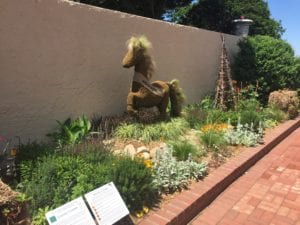
One of the more popular gardens is the sensory garden located in front of the Charles and Helen Reichert Planetarium. A collaboration between Gro Girl Horticultural Therapy and Pal-O-Mine Equestrian J-STEP (Job Security Through Equine Partnership), it features a topiary horse as well as rosemary, lavender, marigolds and lamb’s ear. The garden also recycles Christmas trees (with branches removed) to construct teepee-like structures for climbing, flowering vines. The goal of the garden is “to arouse the senses and to evoke positive feelings.”
“These floral artisans, as well as our own veteran corps of accomplished volunteer gardeners, have invested their time, labor and resources. Their enhancements will be enjoyed by more than 30,000 visitors this summer. We hope to continue this collaboration for many years,” Reinheimer said.
Showcase participants include Gro Girl Horticultural Therapy of Greenlawn, Pal-O-Mine Equestrian J-STEP Program of Islandia, Sacred Gardens of Center Moriches, Dina Yando Landscape & Perennial Garden Design/North Service Nursery of Centerport, Landscapes by Bob Dohne of Greenlawn, Carlstrom Landscapes of Rocky Point, Mossy Pine Garden & Landscape Design of Greenlawn, Centerport Garden Club, Joe deGroot Designs of Centerport, Mother Earth’s Landscape & Nursery of East Northport and Vanderbilt Volunteer Gardeners. Each group is identified by signage at its Garden Showcase site. The event will run through Sept. 30.
The Suffolk County Vanderbilt Museum is located at 180 Little Neck Road in Centerport. To see the gardens, visitors pay only general admission: $8 adults; $7 seniors/students (age 62-plus or student ID); $5 children age 12 and under; children age 2 and under, free. For hours and more information, call 631-854-5579 or visit www.vanderbiltmuseum.org.
Photos courtesy of Vanderbilt Museum
The Gardener’s Delight: Reclaiming Patriot’s Hollow
By Kyrnan Harvey
I was able to attend a meeting of the Three Village Community Trust last Thursday that addressed the complicated issue of nonnative invasive plants. Guest speaker Luke Gervase of the Long Island Invasive Species Management Area led the discussion that emphasized Patriots Hollow State Forest, the few dozen acres of woods running north and west of Route 25A in Setauket, roughly opposite Stop & Shop. Recently the trust announced that it is working toward a stewardship agreement with the New York State Department of Environmental Conservation, as reported in these pages, to restore the woods, currently impenetrable with fallen and cracked trees and the bittersweet, greenbriar and multiflora rose that have seized the day.
But this is not a virgin forest. English settlers in the 17th century farmed along North Country Road and what would become 25A, and the Setalcotts likely did the same before that.
The Fitzsimmons family started farming there in 1939, growing potatoes, and in ensuing years acquired parcels and rented the land to other farmers. Meanwhile, the Roman Catholic Diocese of Rockville Center owned 30 acres along 25A since the 1960s, which was tilled as late as 1980. In other words, this was more or less open land until the farming was discontinued.
Immediately thereafter began the ecological succession of plants that start germinating in fallow fields. On Long Island these would have first been sun-loving perennials like asters, grasses, boneset (Eupatorium perfoliatum), goldenrods and milkweeds, but also sun-loving woody plants like eastern red cedar, Virginia creeper, poison ivy, Rosa multiflora, sumacs (Rhus spp.), wild raspberries and blackberries (Rubus spp.). Native trees like gray birch and black cherry and exotics, like white mulberry and black locust, soon start displacing the pioneering species.
Desirable successional tree species would be hardwood natives like oaks, sassafras and black gum (Nyssa sylvatica), but 40 years later at Patriots Hollow we have, in this prime location within the Old Setauket Historic District, a vast mess of nonnative invasives like black locust, tree of heaven (Ailanthus) and Norway maple that out-competed other canopy trees like the native red maple, the caterpillar-hosting black cherry and the dignified white oak and have precluded the prosperity of understory natives like shadbush (Amelanchier), arrowwood (Viburnum dentatum), spicebush and American holly, not to mention the potential of an array of wonderful undergrowth perennials.
Restoring Patriots Hollow Forest to a multifunctional habitat (for birds and insects, as well as for human use with trails) by engineering species diversity through vertical layering (canopy trees, understory trees and shrubs, undergrowth perennials) and horizontal layering (woods, edge of woods, open clearing) is a daunting project. It requires a vision, human and financial resources and a coherent set of attainable goals. Cynthia Barnes, president of the board of trustees for the Three Village Community Trust, says that a task force will be meeting to draft some preliminary guidelines and ideas for restoration of this DEC property, including doing an inventory of the flora and fauna and describing the current conditions. The task force will work on hosting facilitated public planning workshops in collaboration with the DEC later this year.
Which brings me back to our speaker, Gervase of the LIISMA, who made the point that it is advised to only gradually remove nonnative invasives, else you are clearing the way for a new wave of opportunistic invasive. For example, if you cut down all the black locusts, then you will quickly get a vast inundation of fast-growing Norway maples. But this presumes there will be little or no maintenance at the site. Thousands of freshly germinated maple seedlings can annually be quickly rubbed out with a scuffle hoe, if there is an integrated management plan in place.
Nor need a rigidly dogmatic approach be adopted. Perhaps some black locusts should be left, ones that have attained to the gnarly character of old age, considering that they are “near native”; that it is not prohibitively difficult to establish understory trees, shrubs and perennials under them and that their wood is for split-rail fencing.
I advocate for a nuanced approach that would be capable of adapting to shifting circumstances and that would be capable of improvising wise decisions midstream.
Kyrnan Harvey is a horticulturist and garden designer residing in East Setauket. For more information, visit www.boskygarden.com.
The Gardener’s Delight: Extending the lilac season
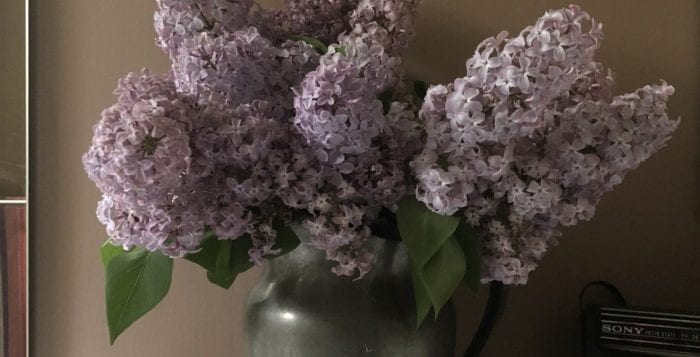
By Kyrnan Harvey
My wife cut a large bunch of lilac flowers yesterday and stuffed them in a pewter pitcher. We inherited an old shrub when we moved to East Setauket. English ivy was growing up its gnarly stems, a young black cherry was growing right through the clump and bittersweet had twisted itself up into the crown. There were only a couple blooms the first May here — the common lilac, Syringa vulgaris — but I immediately freed it and cut out cracked branches and each year it has been more bountiful.
Lilacs are deer-proof and otherwise very tough and durable shrubs that present wonderful colors and scents to the early spring garden. Most are in bloom for the second Sunday in May, but if you plant a few different types — early, mid, and late varieties — you can have that lilac scent in your garden — and home — for four weeks.
This week the earliest, the hyacinthiflora hybrids, may be about faded and finished. If you see a Syringa x hyacinthiflora label on a shrub in a garden center it will be a good variety: dark “Royal Purple” or reddish “Pocahontas” or “Maiden’s Blush.” Add one each year if you have the space. I planted an “Angel White” two years ago but so far it has been shy of flower.
Last year I discovered the gorgeous “Declaration,” with reddish tints in the purple, at a wholesale nursery. I gave one to mom and planted one myself. My son’s school bus driver apparently has a good eye for an unusual color so I got her one too. The common vulgaris lilac is not easily discerned from hybrids, but they flower a little later. I have my eye out for “Beauty of Moscow” (pink buds, white flowers), for “Primrose” (creamy yellow, most strongly perfumed), and for “Wonderblue,” but there are dozens of varieties, only a few of which are readily available commercially. Just avoid buying a plant merely labeled S. vulgaris, because it might be just a little too ordinary and there are so many good cultivars to seek out. My old stomping ground, the New York Botanical Garden, has an astounding collection, cataloged online. Hurry there and take notes.
A week or so after the common lilac, the so-called Canadian lilacs flower. Bred originally in Ottawa by a Miss Preston they are hybrids labeled S. x prestoniae. “Donald Wyman” has been readily available for as long as I can remember, and maybe “Red Wine,” but that’s about all.
Extend the lilac season with S. patula “Miss Kim” and S. meyeri “Palibin.” Known as Korean lilacs, they are both dwarfer than the old-fashioned varieties. “Miss Kim” is readily available, “Palibin” less so, though it has caught on in recent years. “Miss Kim” is a valuable addition for its flowering season well past all others, except the badly scented tree lilac.
“Palibin” has been a favorite of mine for a long time. It doesn’t get much taller than five or six feet and it spreads broadly, rooting in. I have dug up pieces for years and planted them in clients’ gardens. It flowers profusely in light shade, doesn’t get powdery mildew, and is twiggy with small leaves.
All the other varieties must have tons of sun. Even then, they might be shy of flowering, especially when still young. Avoid high-nitrogen fertilizer. Very old shrubs too can disappoint with flower production, and, moreover, be overgrown eyesores. Every few years you should cut to the ground a third of the gnarliest old stems, which encourages fresh new growth, and reduces the shrubs to better scale. Do this directly after flowering, and give them lime. Or — if you burn logs in your fireplace — spread the ash around your lilacs.
Kyrnan Harvey is a horticulturist and garden designer residing in East Setauket. For more information, visit www.boskygarden.com.


